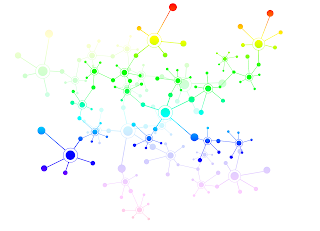 |
| Image Credit: Pixabay |
Author: Mary Haas, MD (PGY-3)
University of Michigan
Over the past year I have come to appreciate the importance of concepts from sociology, psychology, and education theory on my development as a physician and educator. I recently had the pleasure of working with Drs. Felix Ankel, Anand Swaminathan, and Sally Santen on a lecture for the CORD Academic Assembly in Nashville, called Personal Learning Networks. This launched me on a study of personal learning networks and their impact on my own development so far.
A personal learning network refers to a dynamic group of connections that allow individuals to both teach and learn, share ideas and collaborate. Each individual or organization within a network is referred to as a “node.” These networks reflect our values, goals and interests. They include a mixed level of expertise: peers, novices, and experts can all serve as nodes. The most effective personal learning networks include connections outside one’s immediate institution and area of expertise, called “weak ties.”
Although my discovery of the term “personal learning networks” occurred only recently, the concept has served an important role in my life and career for years. As early as college, I knew I wanted to pursue a career in emergency medicine. My undergraduate involvement in EM research led me to attend national meetings, which provided the opportunity to connect with both like-minded peers and inspiring leaders in emergency medicine. Networking and building relationships with those I admired motivated me to pursue emergency medicine as a career. The social nature of emergency physicians and their strong sense of community and solidarity was palpable. This remains one of most appealing aspects of our specialty.
Anand Swaminathan summed up the goal of personal learning networks in this eloquent sentence: “Surround yourself with smart people who think differently.” Becoming involved in AAEM/RSA and other emergency medicine organizations has given me the opportunity to do just that, and has enriched my career as an emergency physician. I remember my first AAEM Scientific Assembly in San Diego, as a second year medical student. My research mentor Dr. Michael Pulia introduced me to the organization and encouraged me to submit our research, which was ultimately accepted as a poster presentation. In San Diego I met Meaghan Mercer, who would become a great mentor and friend. Meaghan encouraged me to follow in her footsteps and run for the Medical Student Council, and ultimately for the AAEM/RSA Board of Directors. Through these positions, I have met other residents who served as peer mentors and taught me by example, such as Vicki Weston, the outgoing AAEM/RSA President. I am honored and excited to now begin my term as AAEM/RSA President, which would not have been possible without the support and encouragement of the mentors and individuals who served a critical role in my personal learning network. Having a personal learning network has also given me the opportunity to mentor others. I have cherished the ability to mentor Mike Wilk, the outgoing Medical Student Council President and incoming chair of the AAEM/RSA Board of Directors Publications Committee. To have even a small part in the success of others is truly rewarding.
The recent expansion of FOAM (Free Open Access Medical Education) has also created the opportunity for students, residents, and other emergency physicians to expand their personal learning networks to include people from around the globe. This has led to innovative collaborations that would not previously have been possible, particularly in medical education. With remarkable ease, a quick email or Tweet to someone you admire can launch a collaborative project that has a positive impact on our specialty.
Practically speaking, there are several key points of advice for creating and expanding one’s personal learning network. These are nicely summarized in a recent post by Drs. Ankel and Swaminathan on the International Clinical Educators (ICE) blog. First and foremost, don’t be shy. Reach out to those you admire (“smart people who think differently”). Take advantage of social media. Follow and engage those who inspire you on Twitter. Whether you have ideas for projects or just want to make a connection, tweet or email. If you see someone at a conference you always wanted to meet in person – introduce yourself! What do you have to lose? Build your personal learning networks around topics that reflect your passions. This will transform any resulting projects into exciting endeavors rather than chores. Seek “weak ties,” as those outside your immediate network provide unique perspectives that allow you to be innovative. Collaborate and use your network for academic productivity. Lastly, give back by serving as a mentor and building up others.
References:
1. Ankel, Felix, and Anand Swaminathan. “Personal Learning Networks: A Hack to Maintain Competence.” Weblog post. International Clinical Educators (ICE) Blog. N.p., 2 Oct. 2015. Web. 12 Mar. 2016.
2. Granovetter, Mark. The Strength of Weak Ties. The American Journal of Sociology 78:1360-1380, 1973
3. Siemens, George. “Connectivism: A Learning Theory for the Digital Age.” (n.d.): n. pag. 12 Dec. 2004. Web. 12 Mar. 2016.
